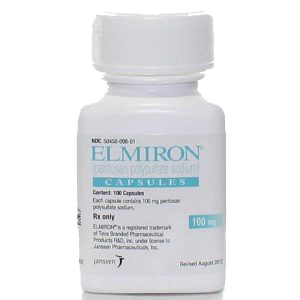Power morcellators are medical devices used during laparoscopic (minimally invasive) surgeries to cut tissue into smaller pieces so the tissue can be removed through a small incision site.These devices are commonly used in gallbladder, kidney, liver, and spleen removal surgery. They are also used in hysterectomy (surgical procedure to remove a women’s uterus) and myomectomy (surgical procedure to remove uterine fibroids which are noncancerous growths in the lining of a women’s uterus).
Prescription Name and Overview
A morcellator is a surgical instrument used for division and removal of large masses of tissues during laparoscopic surgery. In laparoscopic hysterectomy the uterus is minced up, or morcellated, into smaller pieces inside the woman’s abdominal cavity in order to extract from the abdomen. It can consist of a hollow cylinder that penetrates the abdominal wall, ending with sharp edges or cutting jaws, through which a grasper can be inserted to pull the mass into the cylinder to cut out an extractable piece.
Generic Name and Overview
Laparoscopic morcellation is commonly used at surgery to remove bulky specimens from the abdomen using minimally invasive techniques.
OTC Name and Overview
Manufacturer
There are a variety of manufacturers of power morcellators, including, but not limted to:
- Blue Endo – MOREsolution
- Cook Urological, Inc. – Cook Tissue Morcellator
- Ethicon, Inc. – Gynecare Morcellex; Morcellex Sigma; Gynecare X Tract (Johnson & Johnson division that recalled all of its devices)
- Ethicon of FemRx – Diva
- LiNA Medical – Xcise
- Lumenis, Ltd. – VersaCut+ Tissue Morcellator
- KSE America – KSE Steiner Electromechanic Morcellator
- Karl Storz GmbH & Co. – ROTOCUT G1, G2; Swalhe II SuperCut Morcellator
- Olympus – PKS PlasmaSORD; VarioCarve Morcellator
- Richard Wolf GmbH – Morce Power Plus
Labeled Indications
While power morcellators are commonly used for gynecologic surgery, it can be generally implemented in other laparoscopic surgery procedures.
What Is It Used For?
How Does it Work?
A power morcellator is a medical device that performs a specific function during laparoscopic surgery.
During surgery, a power morcellator is used to cut up targeted pieces of tissue inside the body. This allows for tissue to be removed from the body without the need for large surgical incisions.
Once the power morcellator cuts up the targeted tissue into smaller pieces, it can be laparoscopically removed using a small incision into the abdomen. This process allows for organs, growths and other tissue to be removed using less invasive surgical techniques.
The result can be shorter surgical procedures, shorter patient recovery periods and less scarring on the abdomen following surgery.
What are the Approved Uses?
These devices are commonly used in gallbladder, kidney, liver, and spleen removal surgery. They are also used in hysterectomy (surgical procedure to remove a women’s uterus) and myomectomy (surgical procedure to remove uterine fibroids which are noncancerous growths in the lining of a women’s uterus).
Production Anecdotes / History
Historically, morcellation was performed using a device that required the surgeon or assistant to manually ‘squeeze’ the handle. Other reports describe using a scalpel directly through the abdomen to create small specimens that can be drawn out of the abdominal cavity.
In 1993, the first electric morcellator was introduced in the US market. It was initially used for uterine extraction, but later applied to other organs. The use of morcellators at surgery has now become commonplace, with at least 5 devices currently on the US market.
Precautions
Morcellation is associated with spreading of cellular material of the morcellated tissue. In gynecologic surgery for benign pathologies there is approximately a 0.09~0.1% risk of an unexpected leiomyosarcoma. After morcellation 64% of such cases may develop disseminated disease which is of particular concern because of the considerable mortality of leiomyosarcoma. Morcellation of the more frequent benign leiomyoma variants may also cause disseminated disease, which while not associated with increased mortality is frequently inoperable and therefore much more difficult to manage than the original disease.
Long-Term Use Considerations
NA
When To Stop Taking
NA
Long-Term Side Effects
NA
FDA Warnings (History Of)
In 2014, the FDA recommended that morcellators no longer be used during hysterectomy or myomectomy because of their demonstrated risks for spreading deadly cancer cells throughout the body. Additionally, it was determined that they are not 100% effective in removing diseased tissue, either, leading to a recurrence of cancer in the same region.
Also, surgeons have been using them in, “Laparoscopic renal (nephrectomy) or spleen (splenectomy) surgery.” And in some cases it was discovered that, “Benign or cancerous tissue spread to the abdomen in women or men, causing problems.”
In 2017, a new FDA review of recent medical studies suggests that approximately 1 in 225 to 1 in 580 women who undergo surgery (hysterectomy or myomectomy) for presumed benign uterine growths (“fibroids”) may have “occult” or hidden uterine cancers known as sarcomas.
Other Common Side Effects
NA
Lawsuits
Johnson & Johnson subsidiary Ethicon was the largest manufacturer of laparoscopic power morcellators, and the FDA’s warnings about the device put the corporation under pressure. The FDA subsequently issued a “black box” warning on power morcellators in November 2014. The Federal Bureau of Investigation (FBI) launched its own an investigation into Johnson & Johnson after the discrepancies in safety data came to light. About 100 patients filed lawsuits against Ethicon claiming that the parent company’s researchers were aware of the risk that uterine tumors could be misdiagnosed as fibroids.
Power morcellator lawsuits allege, among other things, that manufacturers:
- Introduced inherently dangerous medical devices to the market.
- Did not sufficiently test morcellators.
- Provided inadequate warnings about the risks of spreading and worsening undetected cancer.
Plaintiffs claim that, had they been properly informed about the cancer risks of morcellators, they would have chosen a different surgical procedure. According to lawsuits, manufacturers’ negligence led to women suffering injuries, harm, and economic losses.
http://www.leiomyosarcoma.org/power-morcellator/procedures
https://www.fda.gov/medicaldevices/productsandmedicalprocedures/surgeryandlifesupport/ucm584463.htm
https://www.fda.gov/newsevents/newsroom/fdainbrief/ucm589137.htm

